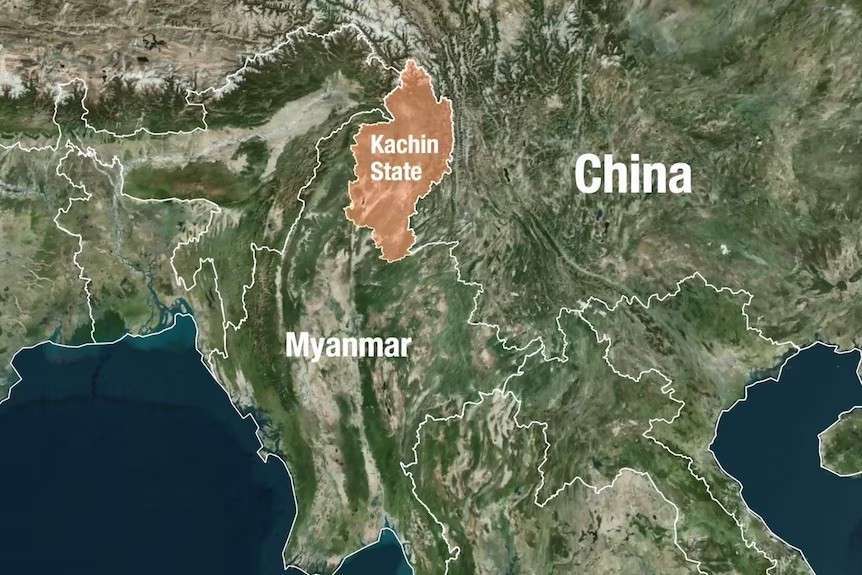In the conflict-ridden frontier of northern Myanmar, an important flashpoint is developing that could have consequences that extend well beyond Southeast Asia. The Chinese government recently issued a stern warning to the Kachin Independence Army (KIA), a powerful ethnic armed group opposing the Myanmar junta for control of the strategically significant city of Bhamo, a logistical hub located only a short distance from the Chinese border.
As tensions rise in the trouble’s spots, it could lead to a much bigger regional crisis affecting China’s web of economic relationships and put more pressure on border security and go even further to destabilizing the fragile political landscape in Southeast Asia.
The Stakes: Rare Earths and Global Supply Chains
Despite its remoteness, Kachin State holds possibly one of the biggest strategic resource investments of the twenty-first century, heavy rare earth elements. These heavy rare earth elements therefore include materials that make up minerals such as dysprosium and terbium, that are utilized in the manufacture of electric vehicle motors, wind turbine generators, precision-guided weapons and various other high-end technologies. About half of the world’s heavy rare earth approximation comes from mines in Kachin, creating a point of critical importance in the global supply chain. These raw materials are usually exported via land route across the border to China, where near global monopoly of rare earth processing and refining takes place, allowing Beijing control of near monopoly of the various finished products utilizing such elements for clean energy solutions and advanced defence systems.
Strategic Importance of Bhamo
The mobilizing conflict implications of the battle for Bhamo, located strategically along both regional and industrial transport routes in upper Burma, can resonate significantly. If the Kachin Independence Army (KIA) were to seize and maintain control of Bhamo, it may severely disrupt the junta’s logistics rail systems in the north and provide the KAI with control over access routes to important rare earth mining and smuggling opportunities with the People Republic of China (PRC). The KIA has been moving steadily forward seizing villages and also gaining control of important mining zoners almost daily, such as Hpakant, and imposing various regulatory structures including the imposition of higher export taxes, and production limits. Already the disruptive conditions may have contributed to 50% decrease of Chinese imports of rare earths.
Trade or Trouble: China’s Warning to the Kachin Rebels:
In May 2025, China conveyed a strong ultimatum to the Kachin Independence Army (KIA) while it moved toward the border city of Bhamo in northern Myanmar. During a closed-door meeting, Chinese officials informed the KIA that if its offensive continued, it would be faced with a blockade to the rare earth mineral trade that China imports from KIA-controlled areas in Kachin State, which are important supplies for China’s technologies and defense, both of which are heavily dependent on rare earth minerals from Kachin State. China was also trying to provide some economic options, suggesting that if the KIA abandoned its offensive, Beijing could pursue enhanced cross-border trade and development options for both sides of the border. In short, if the KIA complied, they could economically benefit; if they resisted, they would face economic isolation. A KIA official said that China flatly said it would cut off all rare earth trade if the KIA wouldn’t withdraw. This example illustrates how China is leveraging economic pressures and dependency on resources to condition armed groups along its borders while maintaining plausible deniability for direct military intrusion.
Humanitarian and strategic consequences
The ongoing conflict in Bhamo has inflicted profound humanitarian and strategic consequences on the 166,000 inhabitants of Bhamo. Even though the military junta may have lost territorial control over Bhamo, it still controls the air and has continued to execute airstrikes with high frequencies that have inevitably resulted in civilian deaths and devastation. This is evidenced by satellite imagery. By contrast, the Kachin Independence Army (KIA) with around 15,000 trained and fortified fighters remains undaunted and optimistic. KIA leaders argue that China’s dependence upon rare earth minerals, much of it sourced from land under KIA control or nearby, does not allow Beijing to isolate them indefinitely. They argue China’s own economics means they will come back to negotiations, not through their pressure.
Kachin conflict shocks the World’s economy.
The armed conflict in Kachin is already having ramifications for the world economy. Between January and May of 2025, China procured only 12,944 metric tons of rare earth materials from Myanmar, a significant decrease from figures a year prior. If the violence persists, there will be a shortage of rare earth minerals by year end, impacting sectors such as clean energy and defense that rely on rare earth minerals.
China is concerned not only about the minerals, but also the control and influence that comes with promoting stability in the area. As they control almost all of the world’s rare earth processing, they are pressuring Kachin rebels and the Myanmar military to keep the border stable for their own interest. While China’s has provided limited guidance, it has stated through its foreign ministry that it calls for an expeditious ceasefire and for peace talks. As the conflict escalates in Kachin, we see how local struggles can have global implications. Rare earth supply chains are threatened, regional power configurations are shifting, and moving forward will require careful diplomacy and immediate humanitarian attention. Whatever transpires next in this corner of Myanmar may have consequences for economies and security policies far and wide.

